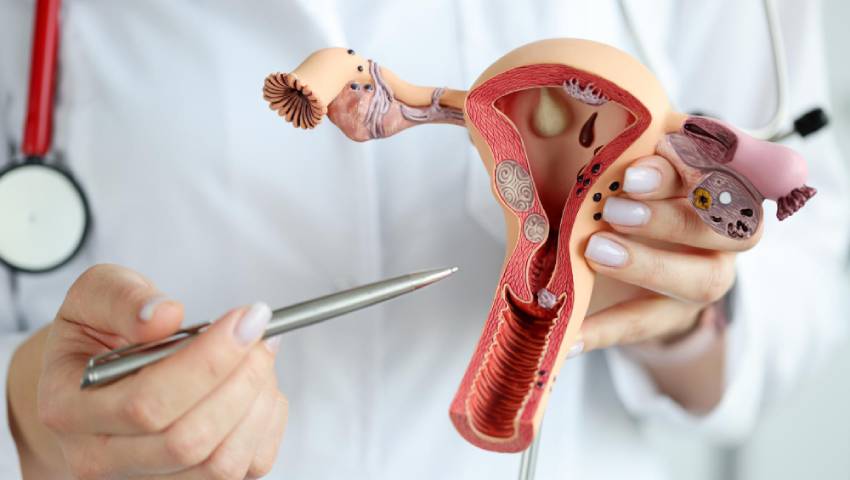
- 03/01/2024
- Dr. Pratik Patil
- 0 Comments
- Blog
Cervical Cancer: All You Need to Know
Welcome to our blog, where we aim to give you with a comprehensive companion on cervical cancer. With our Best Oncologist In pune Dr Pratik Patil understanding this complaint is pivotal for early discovery, and effective operation.
Let see More About Cervical Cancer
What is Cervical Cancer?
Cervical malignant growth begins in the cells covering the cervix, the lower part of the uterus that associates with the vagina. Most cases are brought about by steady disease with high-risk kinds of the human papillomavirus (HPV), a physically communicated contamination.
Risk Factors and Causes of Cervical Cancer:
- Human Papillomavirus (HPV): Really the most significant threat factor, certain strains of HPV play a vital role in the development of cervical cancer. Exploring the transmission and vaccination against HPV becomes essential in the battle against cervical cancer.
- Smoking and Tobacco Use: A lower- known but inversely potent threat factor, smoking has been linked to an increased threat of cervical cancer. Revealing the connection between tobacco use and cervical cancer allows us to make informed life choices for forestallment.
- Weakened Immune System : Individuals with compromised vulnerable systems face an elevated threat of cervical cancer. Uncover the connection between immunosuppression and the development of cervical cancer, emphasizing the significance of a robust vulnerable system.
- Early Sexual Activity and Multiple Partners: The age at which one engages in sexual exertion and the number of mates may impact cervical cancer threat. Shoveling into the nuances of these factors provides perceptivity into forestallment strategies and heightened mindfulness.
- Long- Term Use of Birth Control: A nuanced aspect frequently overlooked, long-term use of certain types of birth control styles may impact cervical cancer threat. Understanding the dynamics of hormonal contraceptives empowers women to make informed opinions regarding their reproductive health.
- Family History and Genetics : Inheritable predilection can play a part in cervical cancer threat. Exploring domestic connections and inheritable factors involved in cervical cancer sheds light on the significance of regular wireworks for those with a family history.
What are the Symptoms of Cervical Cancer?
Cervical cancer may not parade conspicuous symptoms in its early stages. Still, as the complaint progresses, symptoms may include abnormal vaginal bleeding, pelvic pain, pain during intercourse, and unusual vaginal discharge. Regular wireworks, similar as Pap smears and HPV tests, play a pivotal part in detecting cervical abnormalities early.
Prevention:
- Vaccination: HPV vaccines are largely effective in precluding infection with certain high-threat HPV strains.
- Regular Wireworks: Pap smears and HPV tests can descry-cancerous changes, allowing for early intervention.
- Safe Sexual Practices: Using protection during sexual exertion can reduce the threat of HPV transmission.
- Smoking Cessation: Quitting smoking can lower the threat of cervical cancer and ameliorate overall health.
Cervical Cancer Treatment:
- Screening and Diagnosis: Regular wirework and prompt opinion play a vital part in cervical cancer treatment. Explore the significance of Pap smears, HPV tests, and other individual tools that aid in the early identification of cervical abnormalities.
- Conventional Treatment Approaches: Discover the conventional treatment modalities employed in cervical cancer operations. This section will cover surgery, radiation remedy, and chemotherapy – furnishing perceptivity into how each system works and the circumstances in which they’re recommended.
- Targeted Therapies: Explore the slice-edge world of targeted curatives for cervical cancer. Understand how these innovative treatments, similar to immunotherapy, concentrate on specific cancer cells, minimizing damage to healthy apkins and perfecting overall treatment issues.
- Integrative and Supportive Care: Cervical cancer treatment extends beyond medical interventions. You should know about integrative and probative care, including nutritive guidance, internal health support, and life adaptations that can round traditional treatments, promoting holistic well-being.
Conclusion:
In concluding our comprehensive guide on “Cervical Cancer: All You Need to Know,” it’s apparent that knowledge is a redoubtable supporter in the battle against this complaint. Dr. Pratik Patil, a leading expert in the field, has been necessary in advancing our understanding of cervical cancer and its treatment options.
By empowering yourself with information about threat factors, early discovery styles, and the array of treatment modalities available, you take a visionary step toward your health and well-being. Dr. Patil’s fidelity to cervical cancer exploration and case care underscores the significance of collaboration between medical professionals and informed cases.
